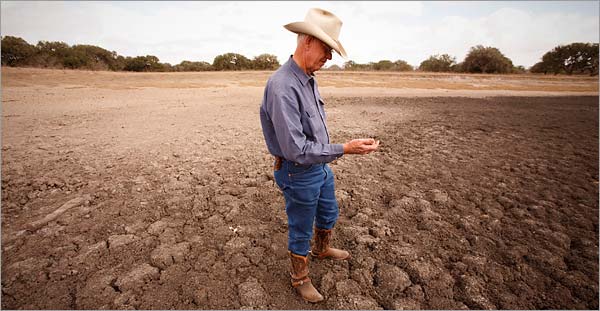Interest in habitat management has increased in recent years thank to the environmental awareness of landowners across the State of Texas. Holistic Management Texas is inviting interested individuals to a field day at the Duncan Brothers’ Duncan Spade Ranch from 9am to 4pm on Saturday, April 10, 2010 ($30). In addition, a Drought Mitigation Workshop with Walt Davis will follow on April 11-12.
“The Spade Ranch was established in 1870 by my great-grandfather, Green C. Duncan, who came to Wharton County from Kentucky after serving in the Civil War. The main crops during the Ranch’s first 30 years were potatoes, cotton, sugar cane, and molasses. Currently, the Ranch is operated by Duncan Brothers, a partnership of five families, with a fifth generation member of one of the families serving as ranch manager – these are our primary decision-makers. Our two ranch employees and six tenant farmers can be included as decision-makers at another level, but they are also part of our resource base.
The ranch is located in Egypt, Texas, about 60 mi southwest of Houston, in the tall grass coastal prairie. The ranch consists of a total of about 7,000 owned acres, and we lease another 1800 acres of irrigated rice land adjacent to Duncan property. In 2009, we planted 640 acres of rice on a cash rent basis, and 700 acres of rice on a crop share arrangement, where we divide with tenant farmers the cost of seed, water and chemicals. We plant Neptune, Cocodrie and Cheniere varieties of rice. Whereas 20 years ago rice was planted on a 3 or four-year rotation (one year in rice followed by 3 years fallow pasture), today the rotation is one year in rice and one-year fallow. As finances permit, we are in the process of bench-leveling all of the rice fields to reduce erosion and better manage irrigation water.
In 2008 we pastured about 600 cows but reduced the herd by 20% during 2009 due to extreme drought. Sources of ranch income include: sales on the ranch of calves; rice, corn, and sometimes grain sorghum and cotton; hunting lease; and surface damage payments from oil companies. We also grow our own hay, and plant 120 acres of winter oats for pasture.
Wildlife is an important part of our resource base. We have leased waterfowl hunting on 4,000 acres to one guide, who constructed five new 10-50 acre ponds for duck hunting and roosting areas. The ponds are flooded in September – after rice harvest – with irrigation canal water and drained in January. Coordinating pond water management with rice farmers can be tricky!
The partnership engaged in a holistic management goal writing session two years ago and some of our goals included: remaining debt free; maintaining a profitable and sustainable cattle, rice, and row crop operation; continuous personal development for all family members; social services available in the community with a thriving economic base; and continue to provide opportunity to the community through education, jobs and financial support.
Ecological goals include maintaining healthy riparian areas, covered with native vegetation, that can support a stable and diverse wildlife population; with creek and river banks not damaged by livestock or other activities, and providing key riparian functions, including trapping sediment, limiting erosion, and buffering the impact of flooding.
A key challenge for us has been effective methods to improve pastures, especially how to clear the invasive McCartney Rose Hedge and nut sedge for better grazing. Options we have considered are to burn, spray, mow or browse. We have traditionally sprayed rose hedge and nut sedge, but added burning may enhance the ability to control the rose infestation. We also consider economical forms of rotational grazing, as we focus on managing grazing pressure relative to animal condition/demand over the year.”
Register or get additional information online or call 830-868-2427.
